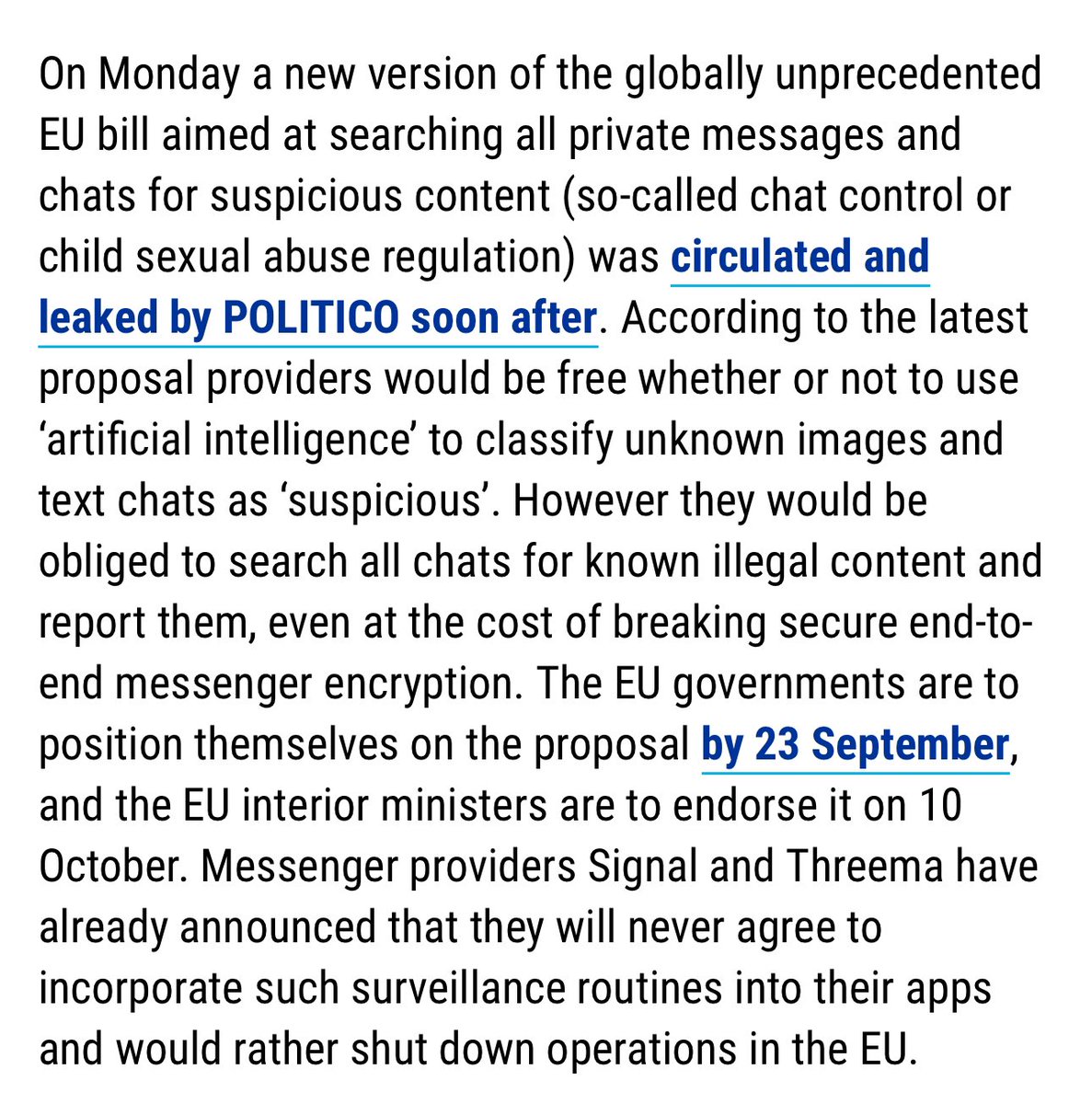
I teach cryptography at Johns Hopkins. Mastodon at matthew_d_green@ioc.exchange and BlueSky at https://t.co/GI4QlxYTdk. Bluecheck not my decision ;)




 28 subscribed
28 subscribed




 28 subscribed
28 subscribed
How to get URL link on X (Twitter) App





 28 subscribed
28 subscribed

https://twitter.com/privacymatters/status/1834177749679751575For those who haven’t been paying attention, the EU Council and Commission have been relentlessly pushing a regulation that would break encryption. It died last year, but it’s back again — this time with Hungary in the driver’s seat. And the timelines are short.

https://twitter.com/profwoodward/status/1833486476740334063In a very short timespan it’s going to be expected that your phone can answer questions about what you did or talked about recently, what restaurants you went to. More capability is going to drive more data access, and people will grant it.
https://twitter.com/lcasdev/status/1810696257137959018The fact that Google is doing this right in the face of US and EU anti-monopoly efforts either means they’ve made a very sophisticated calculation, or they’re headed towards a major reckoning.

https://twitter.com/mer__edith/status/1808456649054589438If you’re thinking that some kind of privacy-preserving age verification system is the answer, that’s great! But you need to make sure your goals (easy access for adults, real privacy, no risk of credentials being stolen) actually overlap with the legislators’ goals.









 The basic idea of this proposal is to scan private (and encrypted) messages for child sexual abuse material. This now means just images and videos. Previous versions also included text and audio, but the new proposal has for the moment set that aside, because it was too creepy.
The basic idea of this proposal is to scan private (and encrypted) messages for child sexual abuse material. This now means just images and videos. Previous versions also included text and audio, but the new proposal has for the moment set that aside, because it was too creepy. 


https://twitter.com/evan_greer/status/1787844723102626299I’ve become a little bit despairing that we can fight this. The pressure on all sides seems much too intense. But we also have very little tech in place to make this safe: and realistically the only people who can develop it work in Cupertino and Mountain View.

https://twitter.com/bpreneel1/status/1785972535173022090The plan, to repeat, is to mandate that every phone contains software that receives a list of illicit material (photos, keywords, AI models that can determine the sentiment of conversations) and scans your data for matches *before* it is encrypted, and alerts the police directly.
